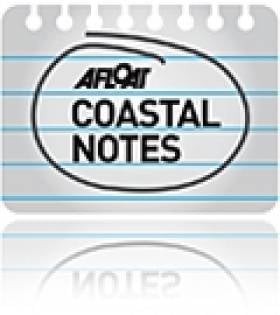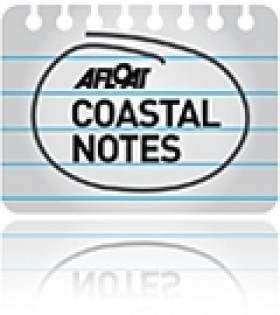Displaying items by tag: E Coli
'Excellent' Result for Clare Bathing Areas in EPA report
#clarebeaches – A newly published report by the EPA on Bathing Water Quality around Ireland has found that County Clare's 11 designated bathing areas were adjudged to have "Excellent Water Quality" during 2014.
The marine environment news has been described as "hugely significant and positive news" by Clare County Council in light of the newly introduced EU standards for bathing areas, deemed by the EPA to be almost twice as strict as those applied in previous years.
Bathing waters were classified into four categories, namely 'Poor', 'Sufficient', 'Good' and the newly introduced 'Excellent' category. The classification system is based on the levels of E. Coli and intestinal enterococci detected in the bathing water during the 2014 bathing season.
Clare is one of five Local Authority areas to receive "Excellent" classifications for each of its bathing areas, the others being Dun Laoghaire Rathdown, Kerry, Leitrim and Louth.
Clare's 11 bathing areas are Ballyalla Lake (Ennis), White Strand (Milltown Malbay), Ballycuggeran (Lough Derg), Cappa Pier (Kilrush), Bishopsquarter, White Strand (Doonbeg), Kilkee, Spanish Point, Lahinch, Fanore and Mountshannon (Lough Derg).
"This is a magnificent achievement for County Clare and those who work throughout the year to safeguard our bathing areas from environmental pollution and to ensure that the public can enjoy these locations in the knowledge that they are bathing in clean waters," stated Councillor John Crowe, Cathaoirleach of Clare County Council.
He added: "This clean sweep for Clare is something that all tourism interests in the County should be aware of as we must now promote our quality beaches and other bathing locations, particularly in light of the growing numbers of visitors arriving in Clare during their journey along the Wild Atlantic Way."
"I wish to pay tribute to the Environment Section of Clare County Council and those living and working in the vicinity of Clare's 11 bathing locations for their due diligence and hard work in delivering this result. It's one that benefits our County's reputation and of course, the environment," said Councillor Crowe.
"The Council is delighted that each of the 11 designated bathing areas that it monitors achieved 'Excellent' status. This achievement is notable in light of the considerable disruption caused to many locations during the storms of early 2014, as well as the newly introduced standards for assessing bathing areas which are almost twice as strict as those previously applied. Our goal now is to maintain these high standards throughout 2015," explained Paul Moroney Senior Engineer, Clare County Council:
Commenting on the bathing water quality results, Dr Matthew Crowe, Director of the EPA's Office of Environmental Assessment, said: "Overall, the quality of Ireland's bathing waters continues to be very good and new standards introduced in 2014 provide a much higher level of protection for bathers."
"Disappointingly, seven identified bathing waters have been assessed as being of poor quality. The relevant local authorities and Irish Water have put management plans in place to tackle the main pollution risks at these beaches. The test will be whether or not we see the necessary improvements in water quality at these beaches," added Dr. Crowe.
The summary report 'Bathing Water Quality in Ireland – A Report for the Year 2014' is available to download from www.epa.ie.
#beach – Clare County Council, on the advice of the Health Service Executive (HSE), has today (Saturday, 21 July 2012) lifted restrictions relating to public bathing at Lahinch, Kilkee and Spanish Point beaches.
The Council confirmed that the preliminary results of water samples taken from the three bathing areas yesterday (Friday) have shown a dramatic reduction of levels of bacteria in the water. The Council and HSE said an improvement in weather conditions in recent days has been the main contributory factor to the positive results.
As previously reported on Afloat.ie the prohibition on bathing at the three locations was put in place on Friday after the results of routine tests on water samples at the three beaches showed up elevated levels of bacteria.
According to Anne Haugh, Director of Services, Clare County Council: "On the advice of the HSE and following analysis of water samples, the Council is delighted to be able to announce the lifting of all restrictions relating to bathing at Lahinch, Kilkee and Spanish Point. Public notices indicating that swimming and surfing at the three locations are no longer prohibited are being erected this afternoon, while the Blue Flag at Lahinch and Kilkee beaches have been restored having been temporarily withdrawn on Friday. Lifeguards at each of the three bathing areas also have been instructed to remove all red flags which had indicated that bathing was prohibited."
Liam Griffin, Water Safety Officer, Clare County Council added: "Clare County Council would like to thank the public for their understanding and cooperation over the past 24 hours. The local authority also acknowledges the valuable role played by the media in promoting the public health notices."

























































